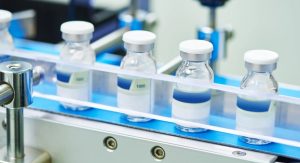Table of Contents
TogglePharmaceutical packaging is undergoing a transformation as new challenges, technologies, and consumer expectations emerge. The packaging, once viewed as a protective layer, is now a critical component of healthcare delivery. Packaging influences everything, from supply chain efficiency to patient adherence, and its evolution will continue to redefine the pharmaceutical sector.
Here, we explore key trends and technologies shaping the future of pharmaceutical packaging and how they benefit businesses and patients alike.
What Does the Future Hold for Pharmaceutical Packaging in Business?
Sustainability is No Longer Optional
Environmental consciousness among consumers and regulatory bodies is pressuring companies to adopt sustainable practices. Pharmaceutical packaging is moving towards greener options to reduce environmental impact. Key trends include:
- Biodegradable and Compostable Materials: Many businesses are looking at plant-based polymers and biodegradable materials as alternatives to traditional fossil-based plastics. These options aim to maintain the protective aspects without harming the planet.
- Recyclable Packaging: Designing packaging that’s easily recyclable or reusable has become more popular, with clear labelling to help consumers dispose of it responsibly. Flexible plastics and mono-materials are prominent in this space.
- Lightweighting: By reducing the weight and material volume of packaging, pharmaceutical companies can decrease overall transportation costs and carbon emissions while meeting regulatory requirements for safety and durability.

By adopting environmentally friendly packaging, businesses can position themselves as forward-thinking and attract eco-conscious consumers and stakeholders.
Smart Packaging for Smarter Healthcare
Smart packaging is revolutionising medicine delivery through technology integration. These advancements make packaging functional and interactive, adding significant benefits to the drug value chain.
- QR Codes and NFC Technology: Some pharmaceutical companies now include QR codes or NFC tags on their packaging, enabling patients to access vital drug information, dosage reminders or instructional videos with a quick scan. This ensures better adherence to prescribed treatments.
- Temperature and Environmental Sensors: Many biologics and vaccines require precise storage conditions. Smart packaging technologies with embedded temperature sensors ensure that drugs are delivered and consumed in optimal conditions, safeguarding product efficacy and patient safety.
- Anti-Counterfeit Measures: Smart features like blockchain verification and tamper-evident seals are becoming critical in identifying and halting counterfeit drugs, protecting both consumers and a company’s reputation.
Personalisation in Packaging

Businesses are beginning to recognise the importance of user-centric and personalised packaging design. This trend addresses patient needs to enhance usability and safety while also building trust in the product.
- Custom Labelling for Complex Medications: Personalised labelling can simplify multi-drug regimens or special dosage requirements, making it easier for patients to understand and follow their prescriptions.
- Elder-Friendly Design: With an ageing population globally, pharmaceutical packaging requires innovations such as easy-open caps, large fonts, and tactile features to promote accessibility.
- Language and Cultural Sensitivity: Personalised packaging tailored with multilingual labelling or regionally adjusted designs ensures inclusivity and better patient comprehension across diverse markets.
Digital Transformation in Packaging
The pharmaceutical packaging sector is also being reshaped by digital technologies to create a streamlined and efficient production process.
- Digital Printing: Digital printing is flexible, allowing for small-batch labelling customisation and rapid design updates without slowing the production process.
- Track-and-Trace Capabilities: Regulatory requirements such as serialisation and track-and-trace measures are pushing businesses to digitise their supply chains. Track-and-trace ensures full product visibility across the supply chain, improving transparency and helping mitigate counterfeit risks.
- Augmented Reality for Packaging Design: AR is emerging as a tool for designing and testing prototypes, enabling quicker market rollouts and ensuring packaging is both functional and consumer-friendly.
Focus on Compliance and Safety
Patient safety is always the top priority in pharmaceutical packaging. With stricter regulations in place globally, packaging technologies are adapting to ensure compliance.
- Child-Resistant Containers: Innovative mechanisms like push-and-turn lids or blister packaging with peel tabs ensure safety for children without compromising patient convenience.
- Tamper-Evident Seals: Seals that visually indicate tampering are becoming the standard to safeguard product authenticity.
- Regulatory Alignment: Compliance with global standards, such as FDA and EMA regulations, is vital. Automated systems are helping manufacturers ensure that their packaging adheres to these complex requirements without errors.
Enhanced Aesthetics for Brand Differentiation

Pharmaceutical packaging isn’t just about being functional; design and branding also play a pivotal role. Attractive packaging can foster trust and loyalty among consumers.
- Minimalist Designs: Clean and simple layouts are gaining traction as they communicate professionalism and reliability while also aligning with sustainability goals.
- Premium Finishes: High-quality materials and finishes such as embossing add to the perceived value of the pharmaceutical product while setting brands apart.
Why Businesses Should Invest in Future-Forward Packaging?
For pharmaceutical companies, staying ahead of packaging trends isn’t just about compliance; it’s about building stronger relationships with patients and improving brand visibility in this evolving landscape.
Adopting innovative packaging solutions offers a competitive edge with supply chain benefits, improved patient experience, and operational savings. By leveraging these trends now, businesses can position themselves as trusted leaders in the pharmaceutical industry.
Wrapping Up
The future of pharma packaging is multi-faceted, shaped by sustainability initiatives, personalised experiences, advanced technologies, and regulatory requirements. Companies that proactively invest in these trends are more likely to build trust with consumers and gain an edge in an increasingly competitive market.
Stay ahead of the curve by monitoring developments in pharmaceutical packaging, and ensure your business remains adaptable, resilient, and ready to innovate.




